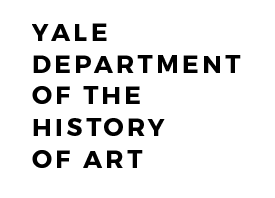Justin Willson
B.A. University of Georgia
PhD. Princeton University
Justin Willson is a historian of Byzantine and early Slavic art. Much of his research focuses on how aesthetic concepts take shape and change over time, especially due to technical and literary trends that shaped how communities evaluated the work of art.
Willson writes and teaches on a multiplicity of media, including panel painting, book illumination, ivory carving, and mural painting. His first book, The Moods of Early Russian Art (University of Chicago Press, 2026), argues for an interconnected system of dispositions that cut across media and reflect the attitudes of makers and patrons. Over the late fourteenth to late sixteenth centuries, the perceptual schemes in Muscovy shifted from an interest in style and iconography to miracle-working icons. Delving into little-studied visual and textual archives, the book tells the story of this dramatic transformation.
Other projects include a history of the icon painter from late antiquity to the early modern period and a study of print’s relation to the painted icon. The latter topic was the subject of his exhibition at the Icon Museum and Study Center, “Printing Icons: Modern Process, Medieval Image,” (2024-25), which focused on icon tracings, looseleaf prints, and books from Eastern Europe, Russia, and the Balkans. With Simon Morsink he is organizing an exhibition on icons in North American collections. An essay on icon prints, some included in the 2024-25 show, was published in Print Quarterly and won the 2025 Schulman and Bullard Article Prize.
Willson is also spearheading an editorial project of primary sources, The Visual Culture of Late Byzantium and the Early Modern Orthodox World (c.1330-c.1669). It is volume 4 in the series “Sources in Byzantine Art History,” published by Cambridge University Press. This handbook will facilitate the teaching of Byzantine and post-Byzantine art at the university level. His article translations have been published in Art in Translation and Annales Universitatis Apulensis.
Before coming to Yale Willson worked as curator at the Icon Museum and Study Center; prior to that, he held the Mellon Postdoctoral Fellowship in Art History Leadership at the Cleveland Museum of Art and Case Western Reserve University. He returned to academia in 2013 after five years teaching high school literature and running a neighborhood rehabilitation nonprofit in Southwest Georgia. He loves collaborating with colleagues in art history, medieval studies, and classical and Slavic languages, and he is eager to hear from students interested in pursuing topics in Byzantine art, widely conceived.
RECENT AND FORTHCOMING PUBLICATIONS (more available here):
“Anti-Portraiture in Byzantium,” in The Byzantine Portrait: Personhood and Representation, eds. Ivan Drpić and Benjamin Anderson (Dumbarton Oaks, Washington D.C., Forthcoming).
“Virtue Idealized in the Golden Chambers of Ivan the Terrible,” Slavonic and East European Review 105, no. 3 (2025).
“Byzantine Excess, Slavic Hesitancy: Euthymios of Tarnovo on Visions,” Byzantine and Modern Greek Studies 49, no. 1 (2025): 48-58.
“Theophanes of Nicaea and the Diagram that Draws and Erases Itself,” with David Jenkins, Dumbarton Oaks Papers 78 (2024): 265-314 (Open access).
“Icon Printing and Pimen Sofronov’s Collection,” Print Quarterly 41, no. 3 (2024): 285-301.
“On the Aesthetic of Diagrams in Byzantine Art,” Speculum 98, no. 3 (July 2023): 763-801.
“Transferring Jerusalem to Muscovy: Maksim Grek’s Letter and Its Afterlife,” with Ashley Morse, The Russian Review 82, no. 2 (2023): 248-62 (Open access).
“The Terminus in Late Byzantine Literature and Aesthetics,” Word & Image 38, no. 4 (2022): 435-47.
“The ho Ôn (ὁ ὤν) Inscription in Christ’s Halo,” Jahrbuch der Österreichischen Byzantinistik 71 (2021): 395-415.
